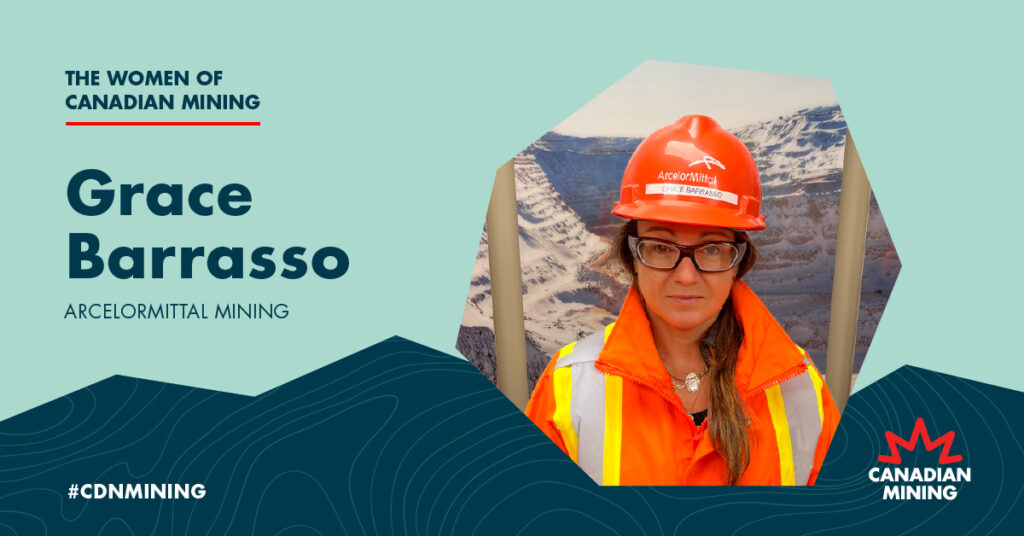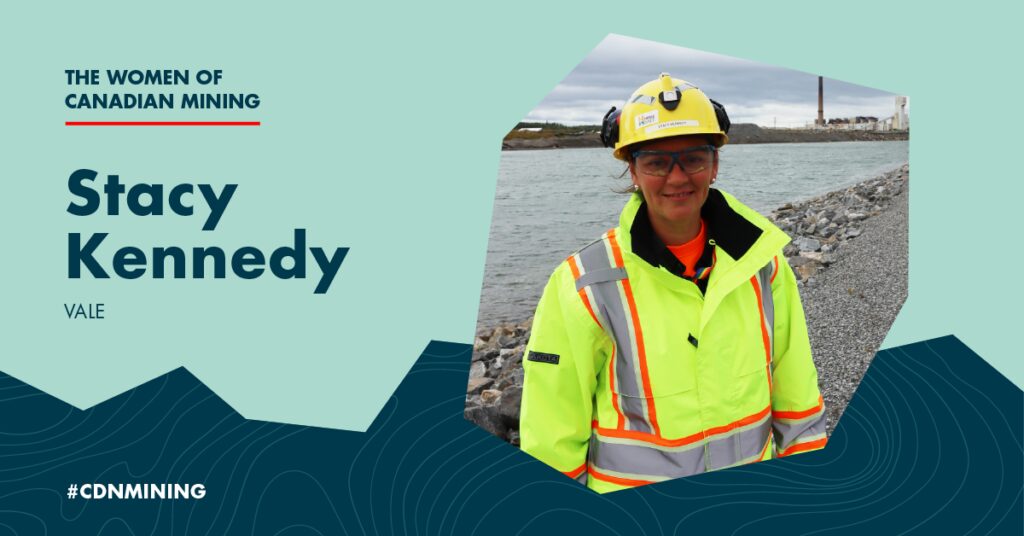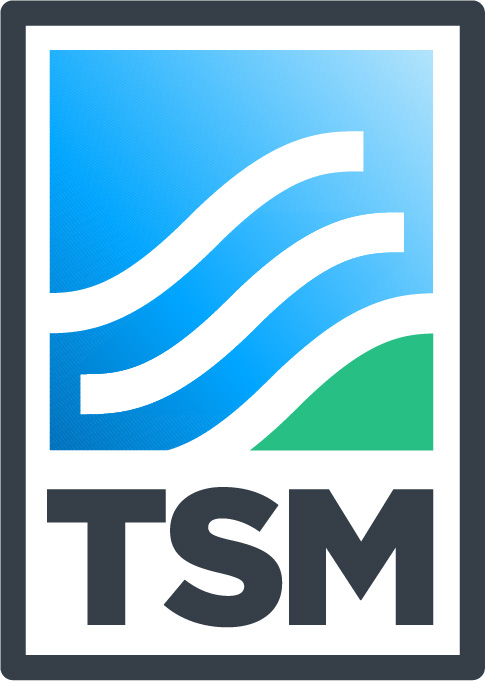Winners to be announced at the CIM Convention in May
The finalists for the 2015 Towards Sustainable Mining (TSM) Awards for Community Engagement and Environmental Excellence have been selected and the award winners will be announced on May 11 at the Canadian Institute of Mining, Metallurgy and Petroleum (CIM) Awards Gala at the 2015 Convention in Montreal.
A total of 16 nominations were submitted by mining companies that participate in the TSM initiative, a performance-based program whereby mining operations evaluate, manage and publicly report on critical environmental and social responsibilities. The selection committee, comprised of members from the Mining Association of Canada’s (MAC) national Community of Interest (COI) Advisory Panel, selected the finalists based on criteria such as innovation, involvement of and engagement with communities, and project outcomes. TSM performance was also considered as an indicator of the company’s ongoing commitment to corporate responsibility.
“We congratulate this year’s finalists for being chosen amongst an impressive set of nominations and for making meaningful change in the communities where they operate. Their innovative projects demonstrate how working with communities and responding to their needs extends the social and economic benefits that mining brings to regions in Canada and across the globe. We look forward to announcing the two winners at the CIM Awards Gala in May,” said Pierre Gratton, President and CEO, MAC.
“The group of applicants for this year’s TSM Excellence Awards, especially the finalists, demonstrated a very high level of engagement with the wider community in an effort to really make a difference. They are raising the performance bar for industry and are deserving of recognition as they work towards real on-the-ground sustainability. Congratulations,” said Joy Kennedy, Member of the Selection Committee and MAC COI Panel.
TSM Community Engagement Award – 2015 Finalists
Iron Ore Company of Canada: Collaborating on common priorities in Labrador West
The region of Labrador West – comprised of Labrador City and Wabush – is a good example of how mining can create modern towns. Labrador City, for example, was built in 1961 for employees of the Iron Ore Company of Canada (IOC) and has grown to a town of 8,500. To help manage community impacts of a cyclical mining industry, IOC created the Community Advisory Panel (CAP) in 2006. The consultative forum includes both mining company representatives and community stakeholders, and helps IOC make informed decisions based on the community’s needs. In 2012, IOC took one step further by creating the Regional Task Force (RTF) to complement the CAP’s efforts. Where the CAP addresses issues at the local level, the RTF is comprised of senior members of the industry and senior government officials who address and escalate issues at the provincial or federal levels. Both the CAP and RTF meet at least four times each year, and their priorities are re-validated annually to ensure their activities remain focused on issues most critical to the local communities.
These groups have generated positive results for the region, including advocating for affordable housing, addressing issues with homelessness, working to ensure the region has appropriate health, emergency and child care services, supporting the development of community infrastructure, and partnering with colleges to improve education and training opportunities. What is particularly notable about the CAP and RTF is that they have successfully united community stakeholders, industry and government at all levels to work towards a common goal: the development and sustainability of the communities where they operate.
Vale: Diversifying economic prosperity in Thompson, Manitoba
In November 2010, Vale’s Manitoba Operations in Thompson announced that it would scale back its operations to mining and milling only by 2015. Recognizing the importance of mining to the region’s economy, Vale immediately set to work to mitigate possible community risks of the partial decommissioning project – a full five years before it would occur. In 2011, Vale engaged and fully funded rePlan, co-launching a multi-stakeholder group, the Thompson Economic Diversification Working Group (TEDWG), that would work collaboratively on action plans to spur economic development and diversification in the region. The TEDWG involved a broad set of stakeholders, including representatives from Vale, Keewatin Tribal Council, Manitoba Keewatinowi Okimakanak, Nisichawayasihk Cree Nation, the City of Thompson, the Manitoba Métis Federation, the Province of Manitoba, and the Thompson Chamber of Commerce. They were united in one common purpose: to accelerate Thompson’s development as a regional service centre for Northern Manitoba, with mining as a strong economic pillar.
Priorities were determined through community engagement and included housing, education and training, regional identity and tourism, economic development, and infrastructure, among others. Over the course of two and half years, the TEDWG’s work resulted in the development of socio-economic action plans and a regulatory framework that are currently being implemented, as well as enduring relationships that were built upon 20,000 hours of inclusive and respectful engagement. Vale’s total investment in the TEDWG was over $2 million, and the process has been widely celebrated as best practice. In fact, the “TEDWG way” has become a common phrase in Thompson for how to bring people together to create positive socio-economic change and the model is currently being applied elsewhere in Manitoba.
De Beers Canada: Books in Homes literacy program in the NWT
When you put a book in a child’s hands, you open them up to a world of opportunity. This was at root of De Beers Canada’s thinking when it formed its Books in Homes program for children attending schools in isolated Aboriginal communities close to its Snap Lake mine in the Northwest Territories. Launched in 2003, the program was a response to concerns from the community that low literacy and low high school graduation rates were creating barriers for Aboriginal residents in obtaining higher education or qualifying for jobs in the mining industry. As limited access to reading materials and virtually non-existent school libraries were contributing to the low literacy rates, Books in Homes was designed to tackle this issue by helping students build home libraries and getting them excited about reading. Through the program, students select three books each year that they can take home to enjoy. Students participating from kindergarten to Grade 12 will have received 39 books courtesy of the company. To date, De Beers has delivered 37,000 books to students, and since 2007, the company has purchased books locally through the Yellowknife Book Cellar.
De Beers has worked with community stakeholders to design and shape the program. Important outcomes have resulted from this collaboration, including an expansion of the program to all grades, and not just for primary and elementary-aged students as originally intended, as well as extending it beyond the original seven NWT communities. De Beers also partnered with Yellowknife Book Cellar to develop a “book fair” format whereby books are brought to the community and children can take their selections home after visiting—a more exciting experience than the original order form format. There are several indicators that show the program is positively impacting the local communities. School attendance peaks on days when the books fairs are held, interest in the program has grown, and parents are increasingly visiting the Yellowknife Book Cellar with lists of books their children want them to purchase.
IAMGOLD Corporation: Multi-functional platform produces new opportunities for local women
In Essakane village, located near IAMGOLD’s Essakane mine in Burkina Faso, the main economic activities are agriculture, livestock farming and gold washing (searching for gold by hand). Women handle most of the domestic chores, particularly meal preparation which accounts for nearly 50% of their time. At a meeting with the mine’s representatives, women from the village expressed their desire to have an electric grain mill, which would greatly lessen the time it would take to shell and grind millet—a staple in the local diet. Traditional methods require the use of a mortar and pestle to grind and pound the grain into flour—a two to three hour process. It also requires the work of more than one woman in a household at a time.
In response, IAMGOLD contacted Burkina Faso-based NGO, OCADES Kaya, to help the women build a multi-functional platform that would provide grain shelling and milling services, and would allow for potential new services in the future, such as a welding station. With the platform’s installation in 2013, the women now have access to technology that produces a higher-quality flour in just two minutes. This has greatly lightened up the women’s workload, freeing up their time for other activities, such as taking literacy classes and learning valuable skills like micro-finance. The women have also gained experience handling the technical and financial management of the platform, providing them with opportunities and experiences previously only afforded to men. The platform itself is a shelter with a lean-to that was constructed using recycled wood from the Essakane mine’s waste materials. This lean-to serves as a meeting place for the women to discuss the platform’s management. The mine also donated metal waste for a welding workshop held at the platform that was used by artisans to make and repair agricultural equipment and housing materials. In April 2015, the OCADES Kaya/Dori consortium will withdraw from the initiative to allow for the village women to take over full management of the platform. The women intend to gradually add income-generating activities that will ensure the sustainability of the platform in the future.
TSM Environmental Excellence Award – 2015 Finalists
Dominion Diamond Ekati Corporation and Diavik Diamond Mine Inc.: Grizzly bear monitoring in the NWT
When regulators, monitoring agencies and community stakeholders asked for a grizzly bear monitoring program, the Ekati Diamond Mine (operated by Dominion Diamond Corporation) and the Diavik Diamond Mine (operated by Rio Tinto) responded by developing a new program that went over and above their environmental monitoring requirements. The Joint Regional Grizzly Bear DNA Program was designed to assess bear population trends and to determine if mining-related activity influenced the relative abundance and distribution of grizzly bears over time.
Following a successful pilot study, the program began its initial two-year phase in 2012 and the gathering of baseline population data was completed in 2013. The study area covered 16,000 km2 of the Central Barrens encompassing the two mine properties. The area was split into a 12×12 km grid with one post located in each grid square, for a total of 112 posts. Traditional knowledge was sought by community elders and land users for the posts’ development and placement. The posts were constructed with mechanisms to bait the bears, which would result in hair samples being left behind that were then collected for DNA analysis. A total of 1,902 hair samples were collected in 2012, and 112 grizzly bear individuals were identified. In 2013, this number rose to 4,709 samples and 136 grizzly bear individuals were identified, 39 of which had no previous detections. The results suggest a detection frequency of 9 to 11 bears/1,000 km2, above estimates from the 1990s where the frequency was 3.5 bears/1000 km2, indicating a stable or increasing bear population in the region. This project, the largest grizzly bear DNA program in the territory, was the first major collaboration between diamond mines in the region. Recently, De Beers’ Snap Lake mine and Gahcho Kué project have come on board, doubling the initial study area to over 30,000 km2. Based on its success, the Government of Nunavut has also deployed similar programs at Back River, Hackett River, Courageous Lake, Izok, Hope Bay, and in the Eastern Arctic.
Vale: Black Bear Management in Bear Country
Near Vale’s Voisey’s Bay mine in Labrador, there can be upwards of 650 sightings of black bears in any given year. In 2005, Voisey’s Bay developed its innovative Black Bear Management Strategy that not only addresses the danger of working in bear country, but also respects the cultural importance of black bears to the Innu and Inuit people of Labrador. The strategy recognizes that, as visitors to the region, the mine needs to co-exist in the remote area without negatively impacting the species. Preventing encounters is paramount and is accomplished by reducing attractants like food and waste, and by restricting access to site buildings and infrastructure. This has resulted in many innovations over the years, often made in-house, to how food waste is stored and removed, and the installation of specially retrofitted door handles that prevent the bears from opening them with their paws. After observing small bear cubs climbing hydro poles on the property and perching at the top, the mine wrapped the poles with a special liner, making them too slippery for curious cubs to climb them.
All new employees, contractors and visitors undergo training that includes information about black bears, what to do in an encounter, company policies and practices, and how to report sightings. Deterrents, like noise makers or rubber bullets, are only used when required to encourage a bear to leave an area that may result in an encounter with staff or when a bear is exhibiting persistent or aggressive behaviour. In the event that a bear becomes more aggressive or is repeatedly attempting to enter buildings or lunch rooms, Vale consults with government and Aboriginal stakeholders to trap and relocate the bear away from the mine site. As an absolute last resort, a bear may be put down if relocation attempts prove unsuccessful, but only following consultation with stakeholders. If put down, the meat and hide are prepared for the community freezer in Nain, the nearest community to the site. Thanks in large part to this strategy, there have been no mine personnel injuries as a result of an encounter with a black bear.
IAMGOLD Corporation: Growing green spaces at local schools in Burkina Faso
In the Sahel region of Burkina Faso, the vegetation primarily consists of spiniferous plants and tree density is very low as a result of climate change and desertification. In schools near IAMGOLD’s Essakane mine, there were few trees to provide children and teachers with shelter from the sun, wind and sandstorms. Mine staff saw an opportunity to change that and, after consulting with nearby communities, launched a planting project called “Bosquets scolaires” (“School Groves”). The project works to promote environmental education amongst students—the decision-makers of tomorrow—to encourage them to take action to protect the environment and replace harmful practices with positive ones. Since 2013, four schools near the Essakane mine have created groves and vegetable gardens that are maintained by students under the supervision of their teachers. Hundreds of students have learned techniques in tree planting and care, as well as how to grow vegetables, which are used by the school canteens for students’ meals. Beyond environmental education and nutritional benefits, the groves have generated additional benefits. A variety of shade and fruit trees have been planted that help improve air quality, provide favourable habitat for wildlife, and prevent soil erosion as the trees’ crowns act as a screen against wind and sandstorms.
The project involves a number of stakeholders working together: students, teachers, communities, local environmental and educational authorities, and the mine. The communities near the mine, and the parent’s association in particular, participated in every phase of the project, contributing pertinent information about the land and farming practices, and providing the necessary labour during the installation of the groves. For its part, the mine contributed technical expertise, and the equipment and supplies that made the planting of the trees possible. The mine also awards prizes to the participating schools for excellence. Based on the project’s success, there has been growing interest from other communities to plant school groves.
The TSM Excellence Awards are intended to acknowledge innovative projects and initiatives that expand and promote sustainable development within the mining sector. For more information about TSM, please visit www.mining.ca/tsm.
-30-
About MAC
The Mining Association of Canada is the national organization for the Canadian mining industry. Its members account for most of Canada’s production of base and precious metals, uranium, diamonds, metallurgical coal, mined oil sands and industrial minerals and are actively engaged in mineral exploration, mining, smelting, refining and semi-fabrication. Please visit www.mining.ca.


